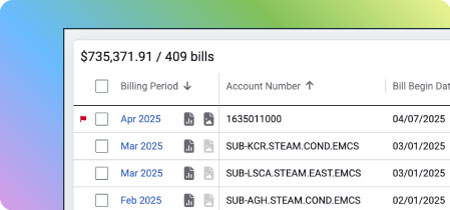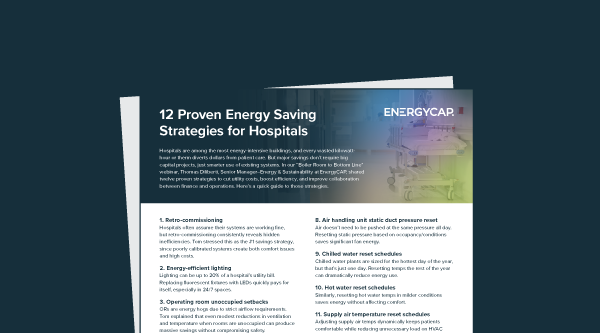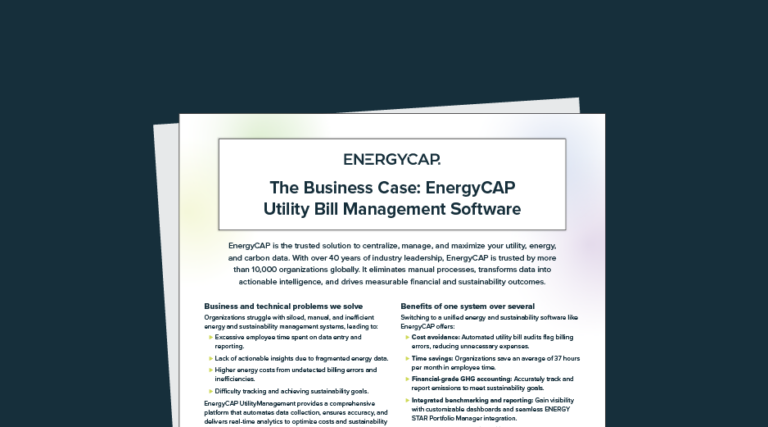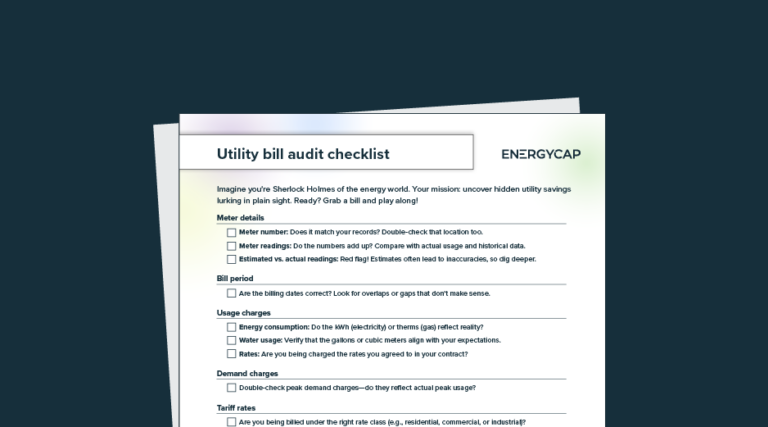Holiday Shutdown Checklist
The holiday season offers more than a break for staff—it’s also a prime opportunity to give your facilities a rest and capture meaningful energy savings. Every year, organizations waste thousands of dollars by leaving buildings running at full capacity while they sit mostly empty. Our Holiday Shutdown Checklist, based on insights shared by Thomas Diliberti in the “Flip the Switch on Facilities and Sustainability Savings” webinar, provides a step-by-step guide to building your shutdown team, identifying the best energy reduction opportunities, and executing a smooth restart. With the right plan, you can cut utility costs, reduce waste, and start the new year on an efficient note.
1. Build a shutdown team and draft the playbook
Establish leadership, ownership, and accountability by engaging everyone that needs to be involved. The foundation of a successful holiday shutdown is building the right team and creating a clear, actionable playbook. Energy savings don’t happen by accident—they require leadership, accountability, and collaboration across departments. Having an executive sponsor at the table brings credibility and helps secure buy-in across the organization. From there, Facilities/Ops leaders, IT directors, and departmental representatives must align on responsibilities, risks, and resources to ensure nothing slips through the cracks.
Tasks to check off:
- Target systems: HVAC, IT, lighting, plug loads, kitchens, etc.
- Quantify opportunities: What’s the kWh/therm/cost upside?
- Map out building control capabilities (BAS, smart plugs, occupancy sensors)
- Define limitations: moisture risks, sensitive gear, compliance, food safety, etc.
- Identify potential failure modes (frozen coils, server room temps, remote access failures)
- Draft a contingency plan (weather, IT outages, last-minute schedule changes)
Pro tip: Don’t get aggressive on your first run. It’s a marathon, not a sprint!
2. Identify and prioritize energy reduction measures (The “3 Ts”)
Once you have your team in place, the next step is to identify where the savings are hiding. As EnergyCAP founder Steve Heinz often says, “If you can’t turn it off, set it back. And if you can’t set it back, tune it up.” These “3 Ts” provide a simple but powerful framework for finding low-hanging fruit that delivers immediate results without compromising safety or comfort.
High-impact target systems:
- HVAC: Reduce setpoints, trim ventilation, shut down zones where allowed
- Lighting: Override schedules, kill exterior lighting not tied to safety
- Plug Loads: Computers, monitors, printers, copiers, kitchen equipment
- Exhaust Systems: Kitchen and restroom fans running 24/7? Shut ‘em down
- IT: Work with tech to turn off non-essential equipment or idle servers
Tasks to check off:
- Consolidate staff to fewer areas to shut down unused zones
- Consider work-from-home where feasible
- Use power strips with timers for shared workspaces
Pro tip: Use EnergyCAP Benchmarking charts to help identify the energy hogs.
3. Preemptive audits and mini pilots
Before launching a full holiday shutdown, it’s important to test your plan under real-world conditions. Many organizations assume their buildings will respond as expected—only to find out the hard way that systems don’t perform correctly. A little preparation goes a long way toward avoiding uncomfortable Monday mornings, frozen coils, or costly failures.
Tasks to achieve:
- Validate assumptions and test control strategies in advance
- Walk key sites and log baseline temps, lighting, and runtimes
- Validate BAS settings, clock sync, remote access
- Check for damper failures (especially in cold/humid climates)
- Pilot a weekend or Thanksgiving-style shutdown, tracking temp recovery, equipment response, and complaints
- Flag control gaps and write down every manual step needed
Pro tip: If you think something’s automated, double check. If it’s been running fine for 5 years, it’s probably overdue for failure.
4. Communicate and execute
Once the prep work is done, it’s time to put the plan into action. Success here depends as much on clear communication and visible leadership as it does on the technical steps. Shutdowns work best when everyone understands the “why” and feels part of the effort. Leading with confidence and sharing the expected benefits (both cost savings and operational logic) helps overcome resistance and builds momentum.
Internal messaging:
- Explain what’s happening and why it matters—share cost and energy estimates
- Ask staff for help: power down workstations, report lights left on, unplug fridges, etc.
- Train facilities techs on what’s being changed and what to watch for
- Confirm BAS programming changes go live (time zones, holiday schedules)
Tasks to achieve:
- Modify HVAC schedules/setpoints
- Override lighting where needed
- Verify changes across buildings remotely (or boots on the ground if needed)
- Take pre- and post-shutdown meter screenshots (if you’ve got AMI or interval data)
Pro tip: Use emissions data to educate on environmental impact.
5. Restart, monitor, and capture the win
A shutdown isn’t truly successful until buildings are running smoothly again and lessons have been captured. It is important to remember that our job isn’t done just because everything was turned off. It’s done when people are back, comfortable, and operations are back to normal. A thoughtful restart builds trust, demonstrates competence, and provides the data you need to prove the value of the effort.
Tasks to achieve:
- Allow generous HVAC recovery time (especially if you’re using VAVs or older RTUs)
- Be available. Murphy’s Law loves building shutdowns
- Log issues: Was a freezer offline? Did a control point fail? Learn from it
- Calculate actual vs. expected energy/cost savings—share the data
Pro tip: Use EnergyCAP Smart Analytics to confirm operation and measure performance.





